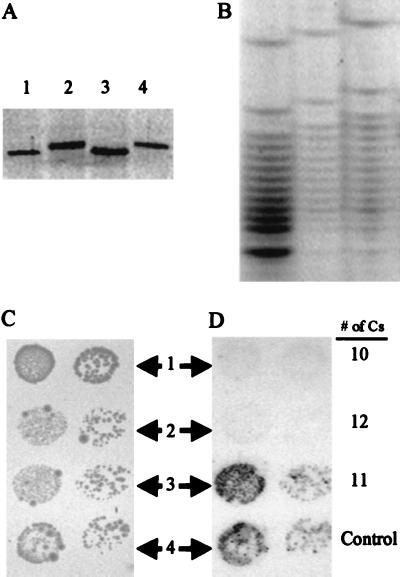Figure 3.
Involvement of lgtG and its poly(C) tract on LOS biosynthesis of GC. (A) SDS-PAGE analysis of LOS isolated from F62Δ8–1 and its derivatives. The lanes represent LOS isolated from: 1, F62Δ8–1; 2, F62Δ8–1(3G9+); 3, F62Δ8–1(3G9+)lgtG; and 4, F62Δ8–1(3G9+)lgtG transformed with pK18-LgtG18 (Table 1). (B) DNA sequencing gel containing the C lanes of the three derivatives of pK18-LgtG18. (C) Photoreproduction of the region of a GC-agar plate containing spots of various F62Δ8–1-derived cells. The small dots inside the spots represent actual colonies after 24 hr of growth. Rows 1 through 3 represent cells that were transformed with constructs that contained 10 Cs, 12 Cs, and 11 Cs, respectively, in poly(C). Row 4 represents cells that were transformed with N. gonorrhoeae strain 4318 (Table 1) chromosomal DNA. (D) Colony immunoblot of the cells shown in C using mAb 3G9.

